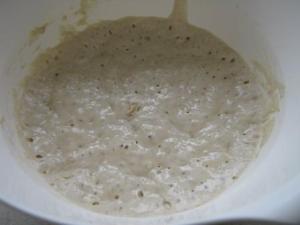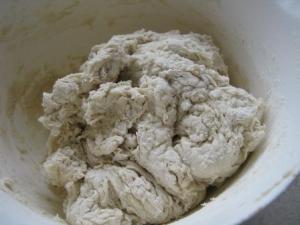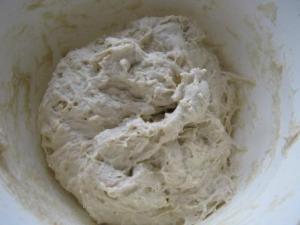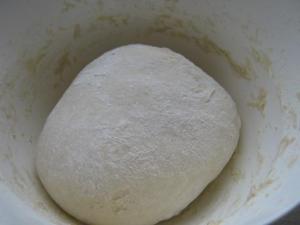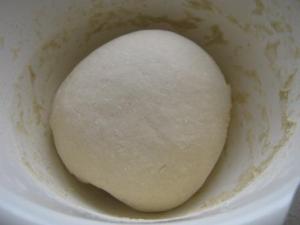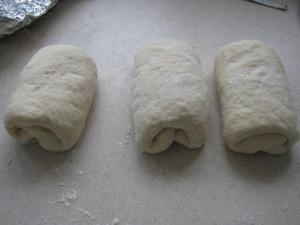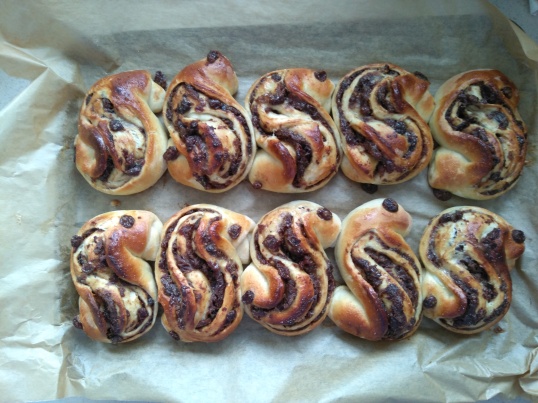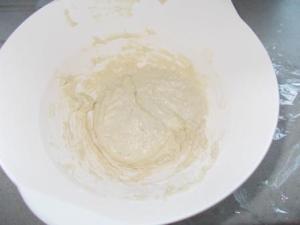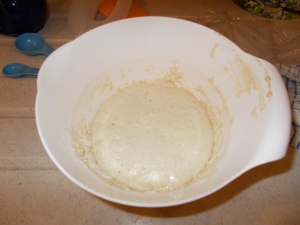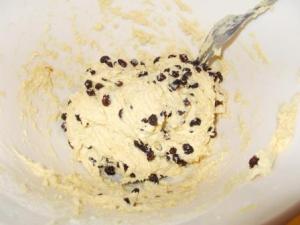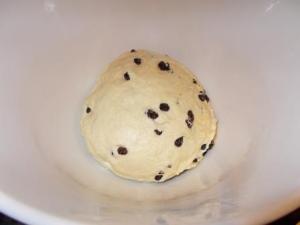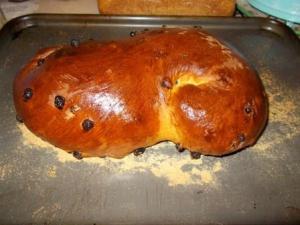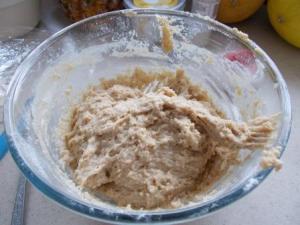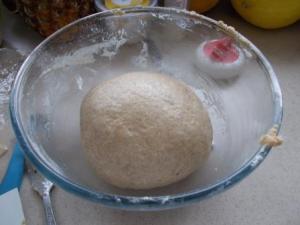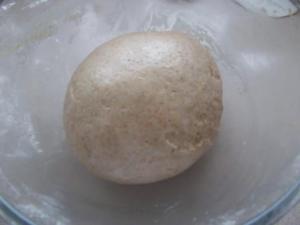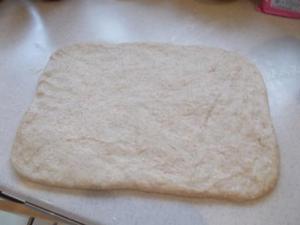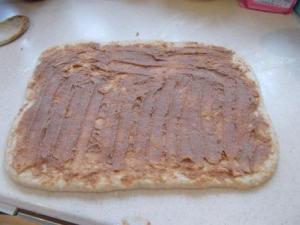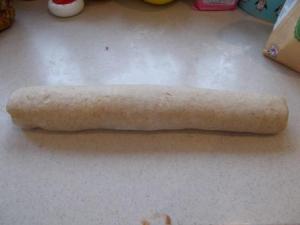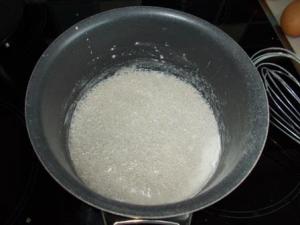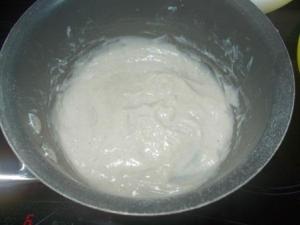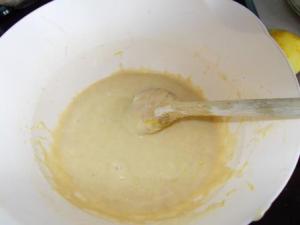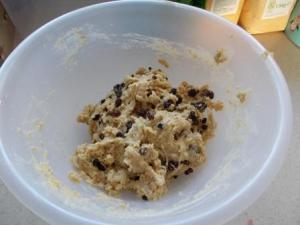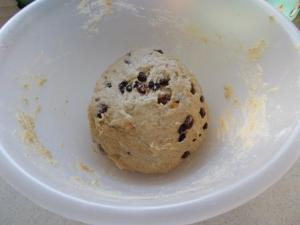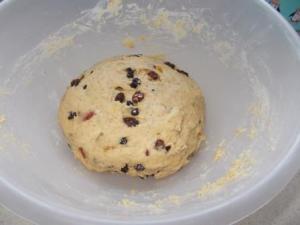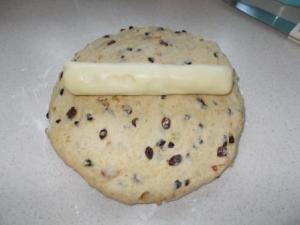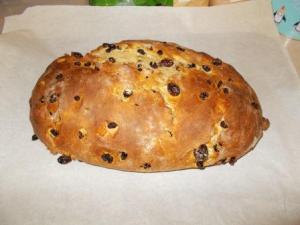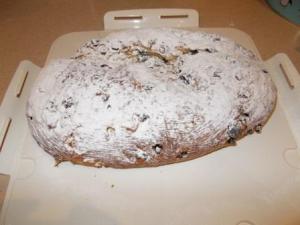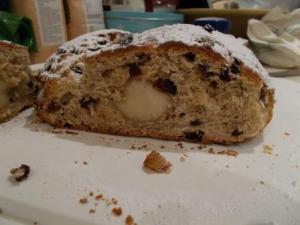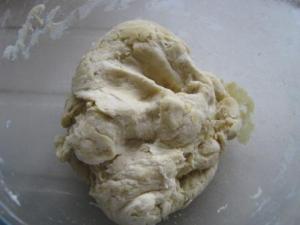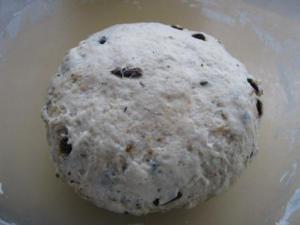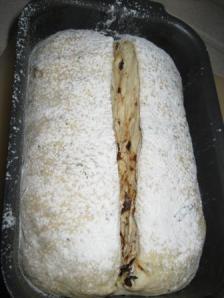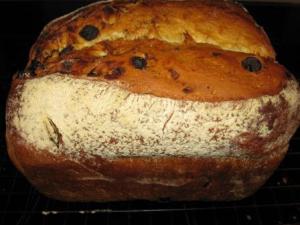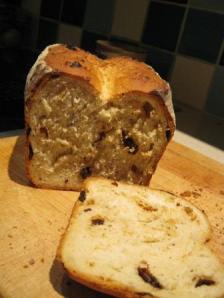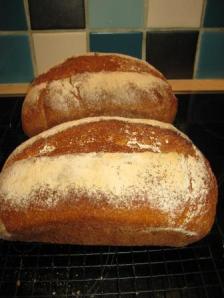Words I’d never thought of putting together. But the Daily Mail newspaper kindly published a little booklet with some bread and other baked goods recipes adapted from How to Make Bread by Emmanuel Hadjiandreou. I don’t have the book so can’t comment on what the adaptations might be or whether the book is any good but the recipes in the booklet seem straightforward enough. They don’t appear to be available online (although I’m happy to be corrected). What is nice about them is that they generally make a 1lb loaf size, which if you are new to trying to make bread might be enough and not too scary or expensive in terms of time or resources. When I’m trying recipes I often half or third or quarter to get a small amount to prove the concept. So good on the Daily Mail for starting small.
I wanted to try the baguettes after criticising that Paul Hollywood for dousing his in olive oil. This recipe only has yeast, salt, water and flour. You make a poolish (love the word, but it is something that can be off-putting, all that new lingo – I prefer the term sponge). Now here’s a case when the recipe says ‘leave over night’ and then ‘next day’. I really hate it when they aren’t precise about timings. So do I make it last thing at night and get on with it when I wake up? Can I leave it until I get home from work? I decided to make the sponge this morning, giving it about 7 hours until I got home from work and the school run before I did the next stage.
So the sponge is a bit of flour, a tiny bit of yeast and some warm water. 1g of active or instant yeast (2g of fresh) 125ml warm water, 125g flour.
The recipe calls for plain flour, but I’ve gone with the strong white bread flour, for no other reason that they didn’t explain why it should be plain flour. I know there’s a difference between French flour and ours, which is I think because the French flour has lower protein but we’re going to have to go with it for today. I’ve used the French flour from Shipton Mill before, and really must get some more. There’s a picture below of what it looked like when I added the other things. Then you add more water, yeast, flour and the salt. 155ml warm water, 1g of active or instant yeast (2g of fresh), 300g flour, 1 tsp salt (and I did go all the way as it isn’t far off the 1% salt we be targeting).
The recipe uses the Dan Lepard approach of bringing it all together, leaving 10 mins, kneading briefly, and then doing all that another 3 times. Nice! I made a marmalade cake in the rests. Pictures below of the dough after the kneads.
Then it is left for an hour. Divided, folded, rested, rolled out, and left to rise. There’s lots of rising time because there’s only about half a teaspoon of (fresh) yeast in the whole thing, so the rising is made nice and slow.
Then baked really hot at 260C for about 10-15 minutes, in a steamed oven.
So, what do we have? Long, brown bread sticks, made without fat of any kind. Got a bit of oven spring out of them, but could have done with more. Could also have been a bit more crunchy, so also maybe proving a bit longer, but will do nicely for sandwiches tomorrow.
